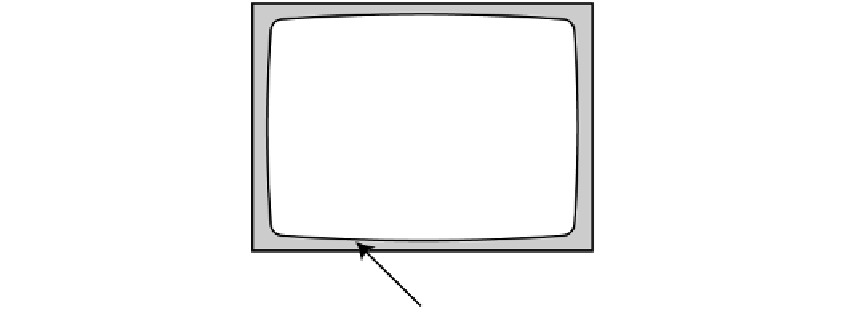Image Processing Reference
In-Depth Information
Visible area on a normal TV set
Overscanned region
Figure 5-10
Over-scanned area on a normal TV set.
Over-scanning is used to avoid seeing noise and ragged synchronization down
either side of the picture. It also hides the half line at the top and bottom of the picture. In
addition, there is some hidden digital data that is not part of the picture intended for the
viewer. Because of this over-scanning, television programs are designed so that everything
happens within a safe area.
The human eye is amazingly forgiving of nonlinearity and curvature of perpendicu-
lar lines. Note that two safe areas are shown in Figure 5-11. One is the action safe area and
the other is the text safe area. The text safe area is even smaller in order to cope with TV sets
that are grossly misconfigured. The safe area ensures that text remains within the part of
the picture that is most likely to be geometrically stable and linear. The safe area is the part
of the picture that is least likely to be cropped or damaged by aspect-ratio conversion.
5.8.3
Legacy 405 Line Transmission
This format is no longer being broadcast, but it is important because some archival mate-
rial was recorded off-air when this was the UK standard-definition service. The material
will be monochrome because no color service was broadcast in this resolution. The BBC
has publicly committed to making some of the archives accessible to UK citizens over the
next few years, and very likely some valuable historical footage in this format will come
to light. Any restorative processes will be performed digitally, so the first step is to convert
the material from an analog form. The equivalent resolution for this service is 400 non-
square pixels across 380 visible lines within a 405-line interlaced raster.
5.8.4
Standard-Definition TV
Standard-definition TV (SDTV) continues to be delivered differently in Europe and the
United States. In fact there are many different variations to the size and scan rate of TV
services all over the world.


Search WWH ::

Custom Search